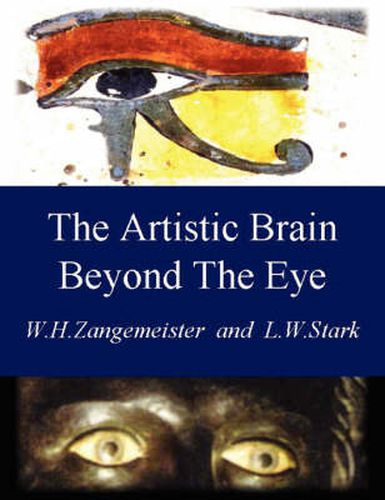Readings Newsletter
Become a Readings Member to make your shopping experience even easier.
Sign in or sign up for free!
You’re not far away from qualifying for FREE standard shipping within Australia
You’ve qualified for FREE standard shipping within Australia
The cart is loading…






This title is printed to order. This book may have been self-published. If so, we cannot guarantee the quality of the content. In the main most books will have gone through the editing process however some may not. We therefore suggest that you be aware of this before ordering this book. If in doubt check either the author or publisher’s details as we are unable to accept any returns unless they are faulty. Please contact us if you have any questions.
What is painting, but a communication channel for the MESSAGE between artist and viewer? Artists first imagine a painting, using their “mind’s eye” image of a segment of their world. Next, using their genius, techniques, and skill, they transfer their mental representations onto the canvas. What is then the function of the externalised painting? It is to communicate a message to a viewer. Our book is about a “neurological theory of art,” inasmuch it relates the particular perspective of cybernetics viewing art as “communication channel” with neuroscientific experimental findings, experiences and opinions of the human art world i. e. artists, critics, art historians, aesthetic philosophers and of course the viewers: this is the red line of our book. With our new knowledge of the modular brain, many aspects of humanistic approaches to vision and art, can be clarified. This book approaches the worlds of art criticism, art history, and the philosophy of art, from the point-of-view of recent studies on the nature of brain control of human vision, and of the role that active eye movements play. Its main topics are: . Art as a form of communication . What is top down (TD) and bottom up (BU) ? . How do they affect our viewing of artful pictures ? . Why did most artists, art historians, and art critics favour the BU approach ? . How does the Scanpath Theory and its relation to TD work ? . Neuroimaging and eye movement studies show how TD works in Visual Cognition when we look at art"
$9.00 standard shipping within Australia
FREE standard shipping within Australia for orders over $100.00
Express & International shipping calculated at checkout
Stock availability can be subject to change without notice. We recommend calling the shop or contacting our online team to check availability of low stock items. Please see our Shopping Online page for more details.
This title is printed to order. This book may have been self-published. If so, we cannot guarantee the quality of the content. In the main most books will have gone through the editing process however some may not. We therefore suggest that you be aware of this before ordering this book. If in doubt check either the author or publisher’s details as we are unable to accept any returns unless they are faulty. Please contact us if you have any questions.
What is painting, but a communication channel for the MESSAGE between artist and viewer? Artists first imagine a painting, using their “mind’s eye” image of a segment of their world. Next, using their genius, techniques, and skill, they transfer their mental representations onto the canvas. What is then the function of the externalised painting? It is to communicate a message to a viewer. Our book is about a “neurological theory of art,” inasmuch it relates the particular perspective of cybernetics viewing art as “communication channel” with neuroscientific experimental findings, experiences and opinions of the human art world i. e. artists, critics, art historians, aesthetic philosophers and of course the viewers: this is the red line of our book. With our new knowledge of the modular brain, many aspects of humanistic approaches to vision and art, can be clarified. This book approaches the worlds of art criticism, art history, and the philosophy of art, from the point-of-view of recent studies on the nature of brain control of human vision, and of the role that active eye movements play. Its main topics are: . Art as a form of communication . What is top down (TD) and bottom up (BU) ? . How do they affect our viewing of artful pictures ? . Why did most artists, art historians, and art critics favour the BU approach ? . How does the Scanpath Theory and its relation to TD work ? . Neuroimaging and eye movement studies show how TD works in Visual Cognition when we look at art"